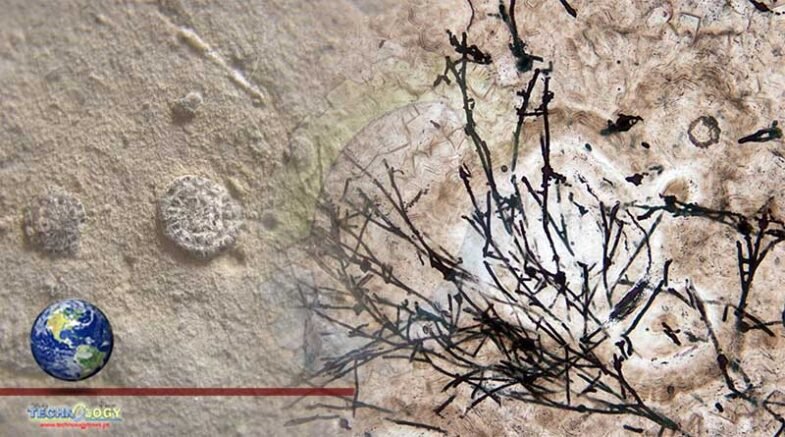Recently discovered in a cave in southern China, is the seemingly oldest evidence of land fungus may be a “wee microfossil” 630m years old.

According to a Science Live report, “Too small to be seen with the naked eye,” this remarkable discovery pushes back the occurrence of terrestrial fungus by approximately 240 million years to a period also identified as “snowball Earth” when this planet was locked in ice between 750 million and 580 million years back.
The existence of land fungus at this crucial point may have health this planet to shift from a frozen iceball to a plant that has an assortment of ecosystems that could host diverse forms of life, researchers wrote in their study.
By having the minerals and organic matter broken down, not to mention recycling into the atmosphere and ocean, ancient fungus could have played a vital role in reshaping the geochemistry of earth, creating more hospitable circumstances that paved the way for earthly plants and animals to ultimately arise and flourish.
Discovery of the Fossilized Threadlike Filaments
Researchers found the fossilized threadlike filaments, a fungus structure trademark, in the sedimentary rocks from China’s Doushantuo Formation in Guizhou Province, dated between approximately 635 million to 541 million years back.
According to geosciences professor Shuhai Xiao, from the Virginia Tech College of Science in Blacksburgh, Virginia, Classifying rocks that might comprise microscopic fossils needs luck and skill.
Xiao, also a co-author of the study published in Nature said, there is “an element of serendipity,” although there is an element of expectation and experience, as well. Having worked with microfossils, the co-author added, “one knows what kind of rocks to look at.”
For instance, rocks need to be fine-grained as fossils are very small. Color can provide hints; organic carbon found in microfossils can make fossil-bearing rocks appear darker compared to those that don’t have fossil content.
It is not error-proof though, Xiao explained, most times, a rock is sliced, and “we don’t find anything.” There is probably a 10-percent success rate, added the expert.
Primeval Life
The earliest organisms’ fossil evidence on Earth is remarkably infrequent. However, this microfossil and other recent discoveries are helping scientists to slowly piece together essential hints about when life first occurred.
Furthermore, marine fungus’ oldest evidence described in 2019 from rocks found in Canada dates to roughly one billion years back; the oldest forest described last year from fossilized roots in upstate New York is more than 380 years old.
More so, the oldest identified animal, Dickinsonia, a bizarre oval-shaped creature, is roughly 558 million years old. Essentially, fossils that were then thought to represent older animals recently referred to as primordial algae.
Canada’s fossilized structures that may have been constructed by microbes from 3.77 billion to 4.29 billion years back represent one of the oldest probable examples of life on this planet.
Meanwhile, other structures preserved in Greenland rock are, though too, to have bacterial origins, and are 3.7 billion years old.
Yet, one more western Australian fossil may have microbes approximated to be 3.5 billion years old. However, some researchers have contended that geothermal activity could have changed chemicals in the rock to make them look like biological traces.
Originally published at The Science Times
